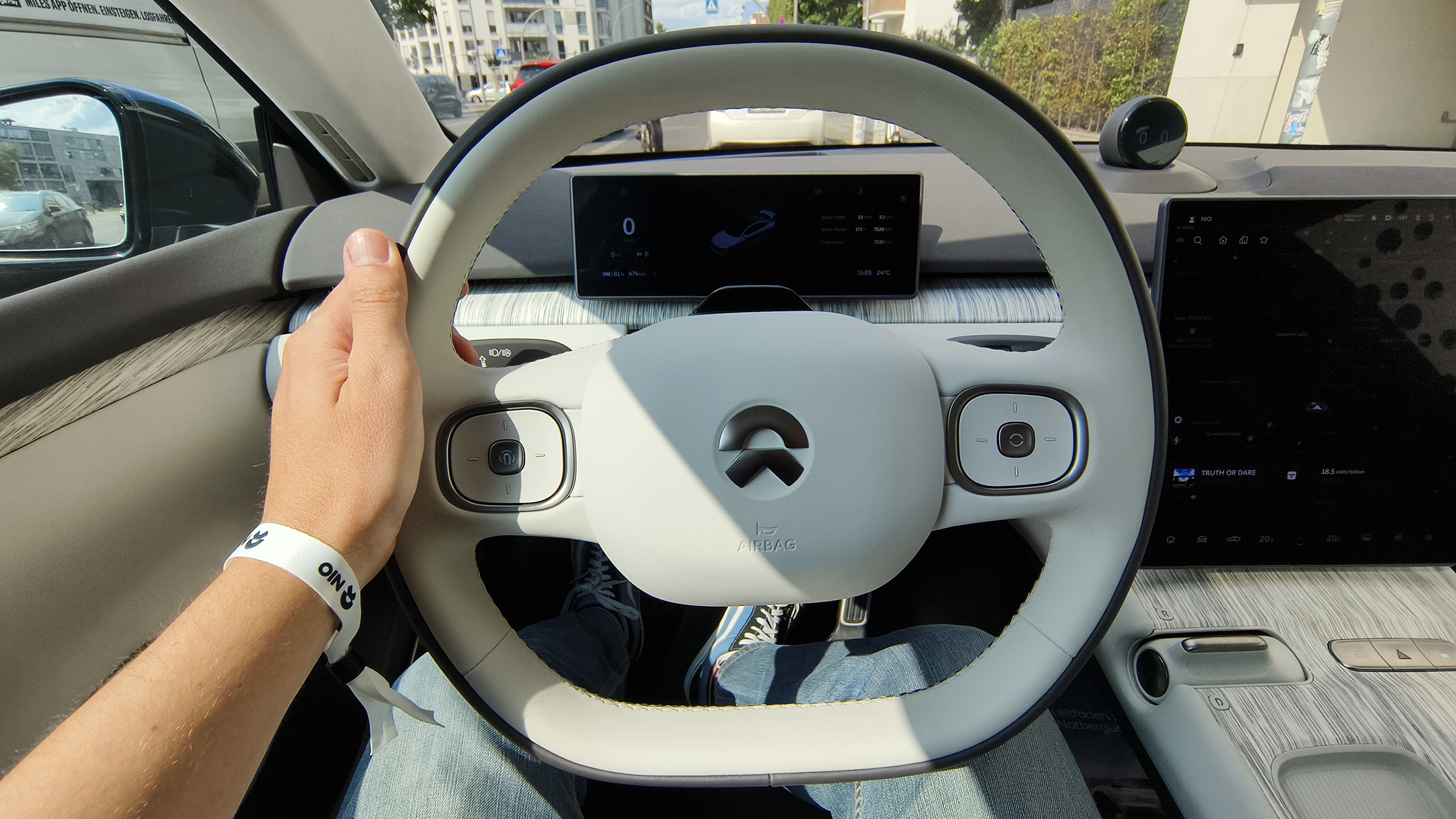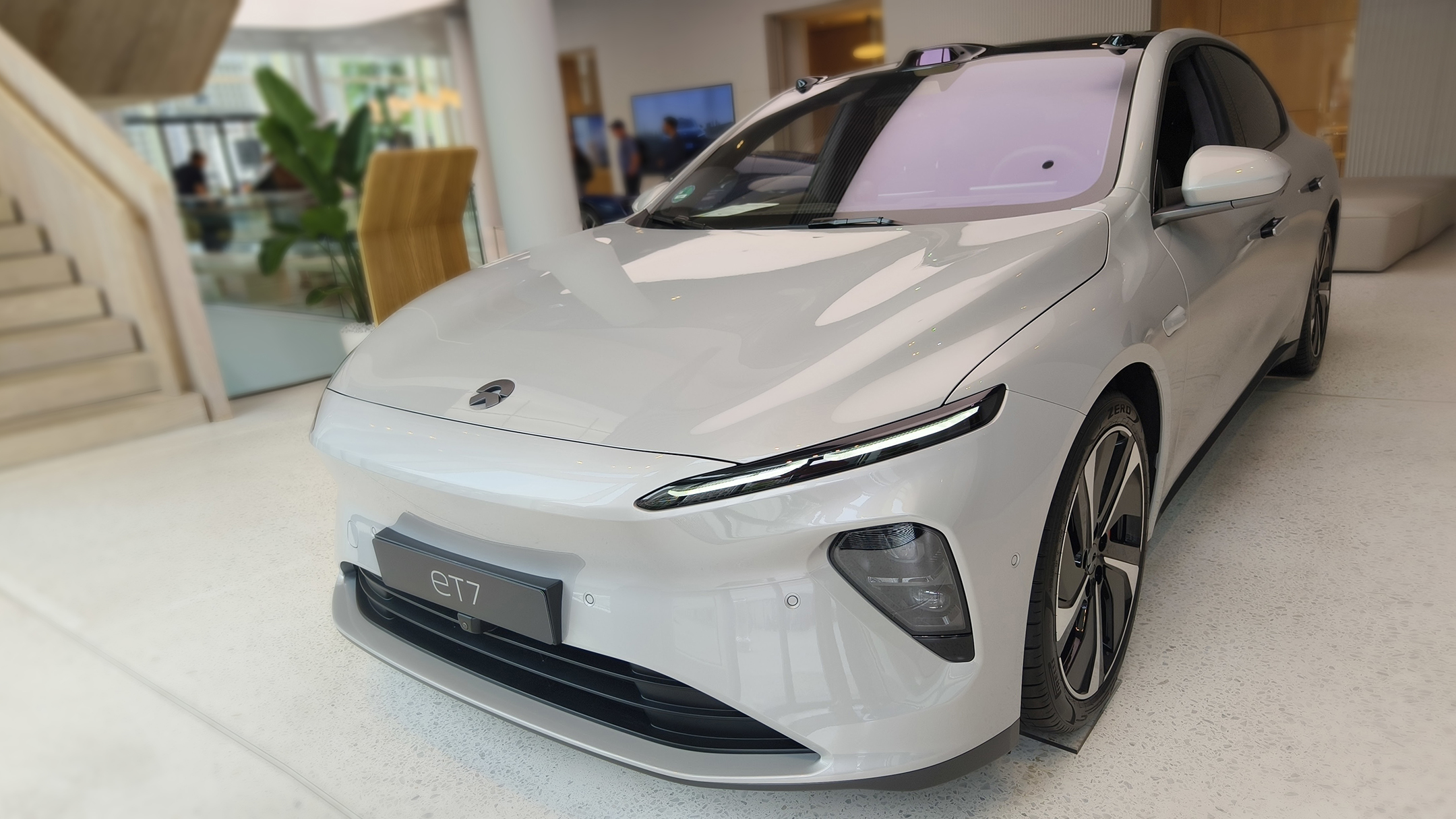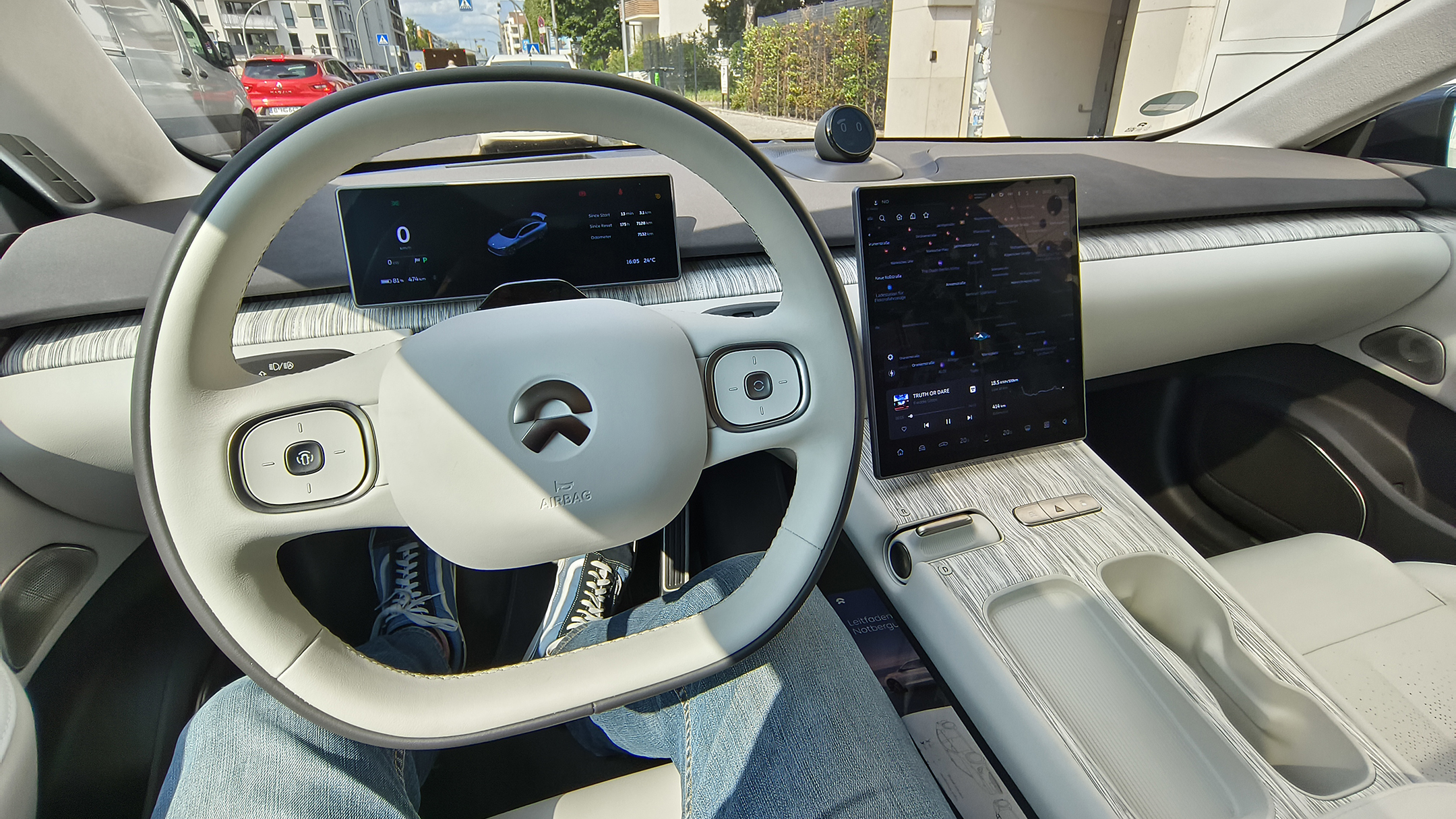
About five years ago I was in Beijing checking out Nio, the electric carmaker, and its then China-only vehicles. Fast-forward to today, however, and I'm in Berlin, Germany, for the opening of the Nio Innovation Center, marking a major step in the company's expansion into Europe. In the near future there will be Nio EVs in the UK, too, although there's no official comment stating exactly when that will be.
I can't wait, though, as this is a car company that does things a little differently (I'm sat in Berlin's Nio House writing this very article, for example, which you can think of as a social space and cafe – they do a darn good cappuccino – not just a showroom to sell cars). You won't get one of those spaces when buying a Tesla.
And there's the other futuristic major unique selling point that Nio's EVs offer: a fully removable battery system, which can be replaced in around just 5 minutes at a "swap station", which the company calls Power Swap. Again, that's a feature that no Tesla or, indeed, any other of the best electric cars can rival. And if there's no Power Swap station nearby then, well, all Nio cars are plug-in EVs, so you can always just charge as normal.

While I didn't get to experience Power Swap in person on this occasion, it's this idea that marks out Nio as being the future of EVs for me. Think about it: battery anxiety has plagued potential buyers of electric cars since day one, and as more EVs get on the road there will be more demand on charging stations. If while on a long journey you could literally just swap the whole battery for a fresh one, that's just as quick as filling up a tank of fuel.
Of course there's a boatload of infrastructure to be put in place for the Power Swap idea to be fruitful for Nio drivers. While there are around 1500 such stations in existence, the vast majority are in China, with Europe – and Nio's markets currently consists of the Netherlands, Norway, Denmark, Sweden, and Germany – hosting 18 at the time of writing. But there are also far fewer Nio drivers in European countries at this stage too.
I spent an hour chatting to Nio's UK Managing Director, Matt Galvin, who went into great detail about the plan for implementing these Power Swap sites. In the UK the tactic will be to situate these stations no more than "two to three minutes from a trunk road" to ensure maximum ease of use. Even so, with the Nio ET7 offering multiple battery configurations, with the largest 150kW, that car can travel up to 1000km/620m on a single charge – which is more than any other I've ever driven to date (and the Mercedes EQS 450 does an impressive job).

It was the Nio ET7 which I got to drive on the streets of Berlin, an unplanned trip from Innovation Center to Nio House on the other side of the city. There are bundles of attractive features, from the 3.8s 0-62mph acceleration potential, to the Nomi smart assistant (which has cutesy animated eyes and the ball-shaped screen in which she lives physically moves around), to the 12.8-inch central display screen.
That screen was much of the discussion at the Innovation Center, too, where Nio executives talked through some of the company's future plans when it comes to technology. From over-the-air updates in both software and firmware, there's full control in receiving additional softwares and features in the future, with a forthcoming update set to deliver the ScreenHits TV content aggregator so passengers can watch their favourite streaming shows, say from Netflix or Amazon Prime.
As the car market gets more competitive with technology and features, it's no option to not compete. And while Nio doesn't offer Apple CarPlay or Android Auto as an option in its vehicles, its infotainment is build on Google Android, so there's a wide spectrum of app availability to integrate into the system (such as Spotify and Tidal, the latter which can output Dolby Atmos three-dimensional audio on the as-standard built-in soundsystem). These kinds of high-end features I think are critical in penetrating the increasingly busy EV market, as while Power Swap is a cool feature, at the end of the day drivers just want to sit comfortably and have their often-used apps at their fingertips.
Nio is super-keen to talk about customer feedback, too, which the company can receive through Nomi-submitted complaints (you can literally talk our your improvement to the car) or via the downloadable app, which are then aggregated and grouped into streams of plausible updates. That, from a user experience perspective, means an agile method to constantly receive improvements to your car – just as you'll find with your best phone or laptop software. I think it's a really interesting approach to back-up an already futuristic Power Swap unique sell point. Which, from where I'm sitting, could all adds up to becoming the future of EVs...







